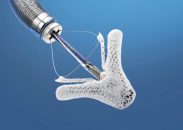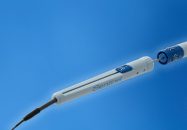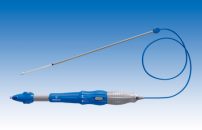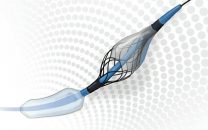Courtesy of Dr. Carlos Fava. Not long ago, atherosclerosis of the common femoral artery used to be treated surgically and, thanks to better training and new balloon devices, we have advanced the endovascular treatment alternative. However, severe calcification continues to be a great limitation. This study aimed at evaluating the feasibility and one year…
Pacing with a 0.035” Guidewire, an Old Technique Coming Back to Simplify TAVR
This study seeks to prove the safety and efficacy of rapid left ventricular pacing through a 0.035” guidewire during aortic valvuloplasty and transcatheter aortic valve replacement (TAVR). Right ventricular temporary pacing placed through venous access during aortic valvuloplasty or during TAVR is time-consuming and, above all, associated with cardiac perforation and tamponade. Since…
Aspirin Desensitization in Patients with Coronary Artery Disease
There are limited data on aspirin desensitization in patients with coronary artery disease (CAD). The aim of this study was to test the safety and efficacy of a rapid desensitization protocol inpatients with a history of aspirin sensitivity about to receive PCI. This was a prospective multicenter observational study, carried out in seven Italian…
MitraClip: Impact of Sinus Rhythm and Heart Rate
Courtesy of Dr. Carlos Fava. Atrial fibrillation (AF) and fast heart rate (>70 lpm) have been shown to increase the risk of mitral valve repair surgery. The MitraClip has shown benefits in high risk patients, but its relation to abnormal heart rhythm has not yet been established. 760 patients were analyzed; 315 (52.4%) presented…
Cerebral Protection in TAVR: Does It Improve Cognitive Function?
Neurological complications during transcatheter aortic valve replacement (TAVR) may be reduced with cerebral protection devices; this study was designed to explore that hypothesis. The study enrolled 363 patients undergoing TAVR in 19 sites and divided them in three arms: a safety arm (n = 123), a device imaging arm (n = 121), and a non-device imaging arm (n = 119). The…
Meta-analysis on Cerebral Embolic Protection in TAVR
Cerebral embolic protection is a strategy to prevent embolization of thrombotic or calcific debris during transcatheter aortic valve replacement (TAVR). A number of randomized and controlled studies have tested the safety and efficacy of various devices, though none of them have enough statistical power to show significant differences in end points. While preliminary…
Is The Transradial Approach Useful in CTO?
Courtesy of Dr. Carlos Fava. The transradial approach has been advanced in time, and is being increasingly used in more and more complex angioplasty procedures with the same benefit, compared to the classical femoral approach. As a result, in many high volume centers, this reality has demoted the femoral approach to a few particular procedures.…
Evolut R: Clinical Results Might Be Better than Those for First-Generation CoreValve
Two recent articles featured in JACC Cardiovascular Interventions showed that short term (at 30 days) outcomes of patients treated with the next-generation self-expanding Medtronic Evolut R valves could present several advantages compared to the original CoreValve, including recapturability. Both analyses reported similar rates of all-cause mortality and stroke. The study carried out by Dr. Jeffrey Popma as…
Double Kissing Crush vs. Provisional Stenting at 5 Years
Courtesy of Dr. Guillermo Migliaro. The Provisional Stenting technique (PS) consists of sequentially placing a stent in the main branch of the bifurcation and, only when faced with a suboptimal outcome (such as < 3 TIMI flow, flow limiting dissection or high residual stenosis), a second stent in the side branch. Several studies have shown…
Post-Dilation of Self-Expanding Valves: Frequency, Usefulness, and Risks
This study explores the impact of balloon post-dilation on studies conducted in the United States assessing the CoreValve self-expandable valve. Procedural details of 3532 patients were examined to determine whether post-dilation was performed after valve implantation. Best practice guidelines recommend post-dilation to improve suboptimal outcomes, being the most frequent alternative for treating moderate or severe…









